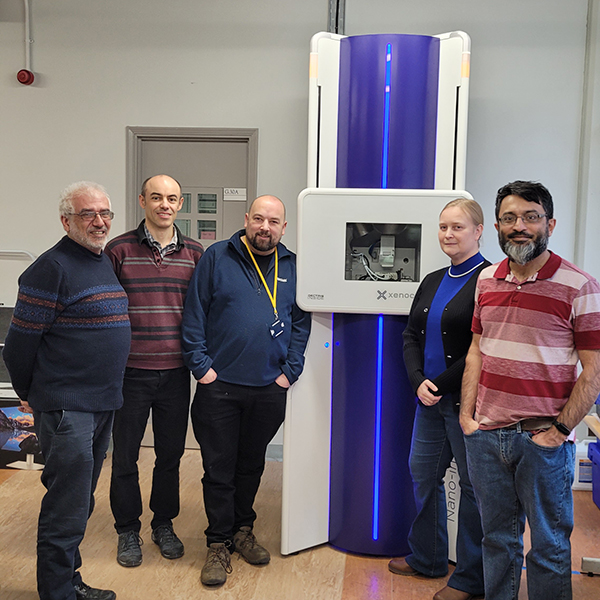The Faculty of Science at Queen Mary University of London (QMUL) has recently acquired a Nano-inXider Small Angle X-ray Scattering (SAXS) and Wide Angle X-ray Scattering (WAXS) system expanding their research capabilities in advanced materials. Installed at the interdisciplinary X-ray Diffraction Facility in the Faculty of Science and Engineering, this instrument marks a significant advancement for the university.
In this article, Queen Mary researchers, including Prof. Himadri Gupta, Dr. Richard Whiteley, and Prof. Alan Drew, who are the primary users of the instrument, share insights into how the Nano-inXider will be used for their research and the advantages it offers.
SAXS in the lab to boost material research
The Nano-inXider SAXS/WAXS system offers capabilities for characterizing advanced materials with remarkable precision. By integrating this system into their laboratory, researchers gain the ability to perform detailed measurements in-house, reducing reliance on external facilities. Moreover, the Nano-inXider is a versatile instrument, probing length scales from the atomic level (1 Angstrom) to dimensions over 1000 times larger, all in a single measurement. This comprehensive range allows for a deeper understanding of material structures and properties of materials, enabling scientists to explore and innovate more efficiently.
Dr. Richard Whiteley, lead technical officer at the X-ray diffraction facility at QMUL, said “The acquisition of SAXS/WAXS capabilities through the Xenocs Nano-inXider provides a major boost to our portfolio of material analysis techniques, fills a missing gap in quantitative characterisation between the molecular and microscopic scale, and will enhance both our ability to address new scientific questions as well as collaborate with industry and third parties”.

Exploring Diverse Applications
A diverse array of disciplines and applications studied by several research groups across the University stand to benefit from the new equipment. These include research areas such as the development of new materials for energy and catalysis, pharmaceutical applications, future manufacturing, as well as biomimetic and dental materials, and mechanobiology.
For instance, Prof. Alan Drew from the School of Physical and Chemical Sciences at QMUL noted that in energy materials “this system would enable the pores of next generation battery electrodes to be measured, allowing us to close the loop between synthesis parameters, pore sizes and their size distribution, and battery performance. We will also be able to measure the size of inorganic nanoparticles embedded in organic semiconducting devices, which modifies device sensitivity, and so is a critical control parameter”.

In the bioengineering field, Prof. Himadri Gupta from the School of Engineering and Materials Science added “We aim to use the Nano-inXider to detect very small-scale (sub-micron) tissue-level signatures of disease and deterioration in conditions like osteoarthritis or fibrosis (scarring), which are not accessible by other X-ray imaging techniques. Doing so will enable both early detection and development of targeted therapies”.
About Queen Mary University
Queen Mary University of London (QMUL) is a prestigious Russell Group institution located in the heart of London, United Kingdom. Home to over 26,000 students from diverse backgrounds, QMUL offers a wide array of undergraduate, postgraduate, and research programs across various disciplines. With a focus on academic excellence and innovation, QMUL is at the forefront of groundbreaking research in fields such as medicine, engineering, law, and the humanities. Its state-of-the-art facilities and collaborative research environment offer students and faculty opportunities to engage in research and make contributions to society. Committed to diversity, inclusion, and global engagement, QMUL is dedicated to shaping the future of education and research on both a national and international scale.
Link to Queen Mary article: https://www.sems.qmul.ac.uk/news/6748/queen-mary-scientists-welcome-new-equipment-in-a-major-boost-for-materials-analysis


